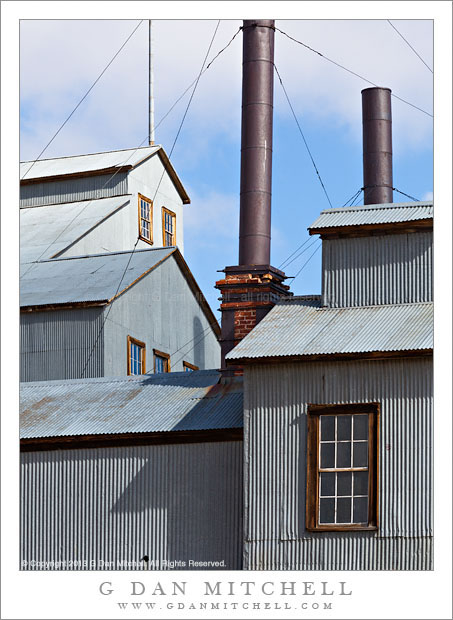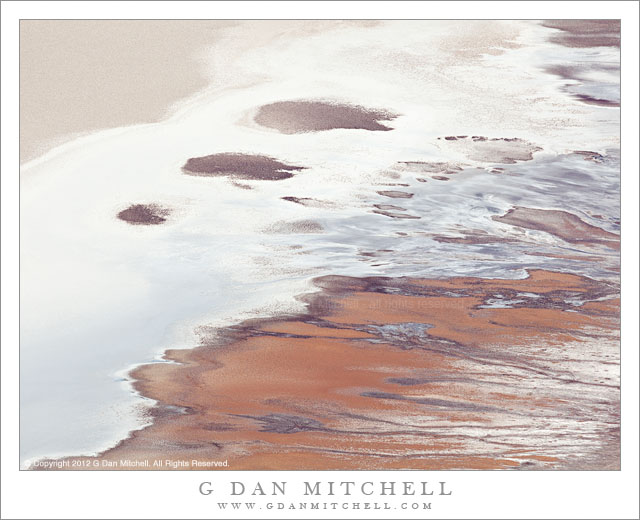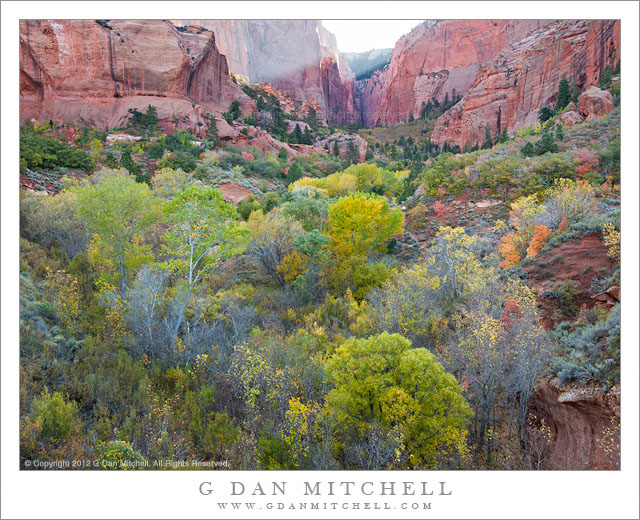
Chimneys and Building Details, Standard Mill. Bodie, California. October 13, 2013. © Copyright 2013 G Dan Mitchell – all rights reserved.
Details of buildings and chimneys at the Standard Mill, Bodie ghost town, California
On the final day of our October eastern Sierra visit we covered a lot of ground, starting with dawn virga and light snow near Mammoth Lakes before heading east into the high desert toward the Nevada border and then north by back roads past Mono Lake to Lee Vining, where we finally stopped for a very late breakfast. We headed north from Lee Vining, first stopping to photograph aspens near Conway Summit, and the snow that was still falling above along the Sierra crest. With this “interesting” weather still around, it seemed like it might be worth a trip out to Bodie.
I’ve been to Bodie a number of times, and while the historical story is fascinating and the presence of such a large abandoned town is remarkable, I have sometimes been frustrated by the stark and cloudless skies and the realization that the place has been photographed so darned much! But a number of years ago I made it out there on a spring day when there was light snow falling, and I realized that in the right conditions it is still well worth a visit. Since there was a possibility of similar weather this time – though snow did not fall after we arrived – and since it was the off-season, the drive seemed worth it. And it was. Along the way we saw high desert aspen groves, which have a very different appearance than those of the eastern Sierra. The weather gave us a combination of blue skies, partial clouds, and occasional mists covering hill tops – and all of this was constantly changing as the clouds thickened and thinned. As I have walked around Bodie in the past I have been fascinated by the large Standard Mill that sits across the Valley. Since it is fenced off and access isn’t permitted without a guide, I was not able to walk among the buildings… but I was able to get close enough to make some photographs of the interesting juxtapositions of stark metal walls, windows, and chimneys.
 G Dan Mitchell is a California photographer and visual opportunist whose subjects include the Pacific coast, redwood forests, central California oak/grasslands, the Sierra Nevada, California deserts, urban landscapes, night photography, and more.
G Dan Mitchell is a California photographer and visual opportunist whose subjects include the Pacific coast, redwood forests, central California oak/grasslands, the Sierra Nevada, California deserts, urban landscapes, night photography, and more.
Blog | About | Flickr | Twitter | Facebook | Google+ | 500px.com | LinkedIn | Email
Text, photographs, and other media are © Copyright G Dan Mitchell (or others when indicated) and are not in the public domain and may not be used on websites, blogs, or in other media without advance permission from G Dan Mitchell.



